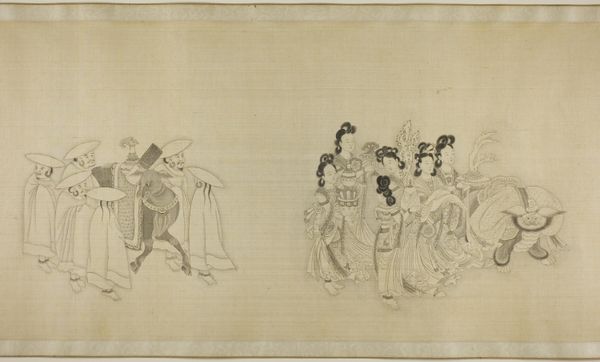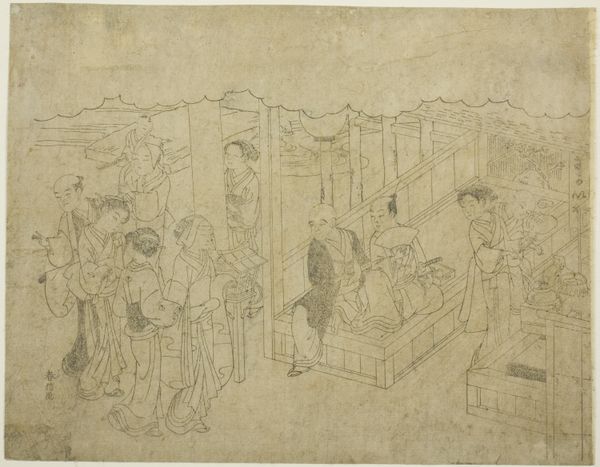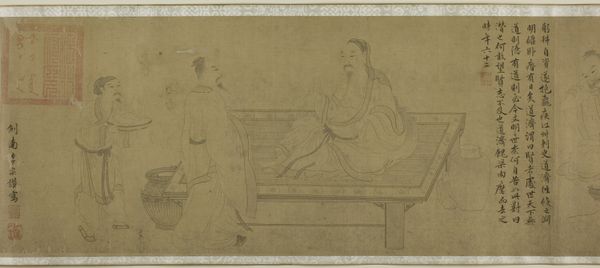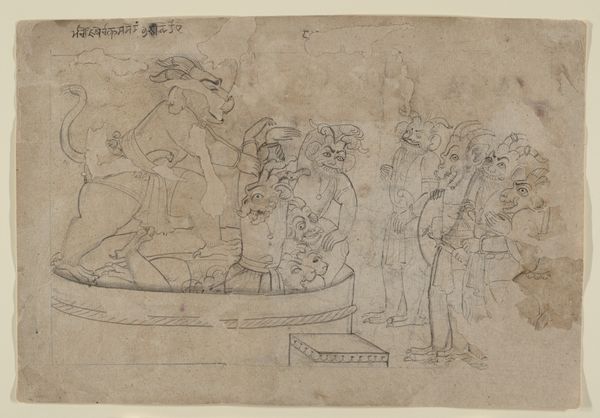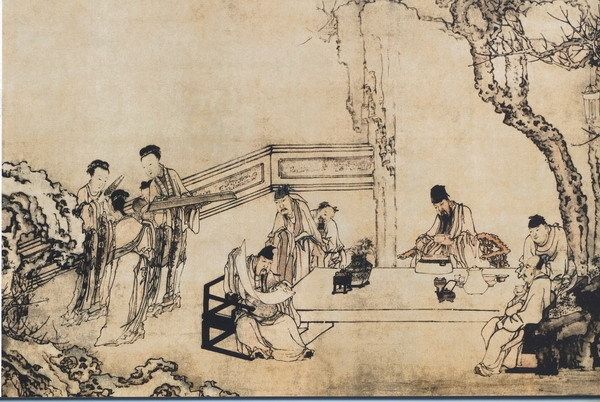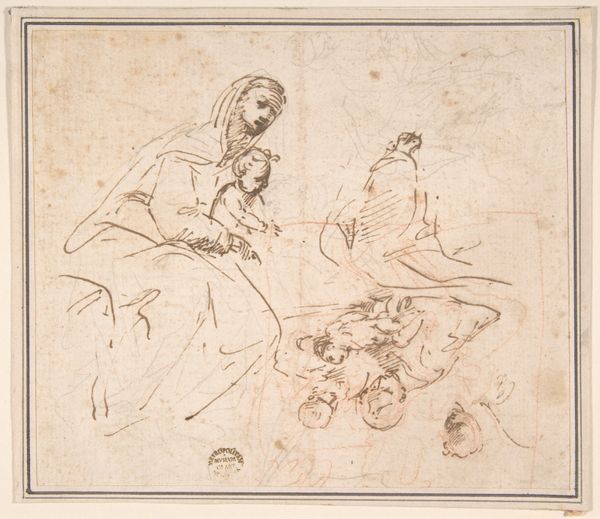
drawing, ink
#
drawing
#
narrative-art
#
asian-art
#
landscape
#
figuration
#
22_ming-dynasty-1368-1644
#
ink
#
men
#
china
#
calligraphy
Dimensions: 11 7/8 in. × 19 ft. 5 1/2 in. (30.2 × 593.1 cm)
Copyright: Public Domain
Curator: This drawing, attributed to an anonymous artist, is known as “White Lotus Society” and dates back to the Ming Dynasty, specifically between 1368 and 1499. Executed in ink on paper, it now resides at the Metropolitan Museum of Art. Editor: Immediately, the image feels like a covert gathering. The delicate, almost translucent ink strokes lend an ethereal quality, making the scene appear veiled in secrecy, almost dreamlike. It also reminds me a bit of those supposed philosophical, artistic, masculine gatherings described by Virginia Woolf... Curator: Indeed. The figures gathered around a central table likely hold significant meaning. Circles, as you surely noted, feature centrally in many philosophies and systems of symbolic thought as containing something potentially unbounded. This, set within an atmospheric landscape, gives the work a transcendent feeling. What, to you, makes this image read as particularly social? Editor: Look at the figures: they're huddled together, intensely focused on objects in the middle. It’s such a human scene, all genders participating in what looks like intense communal rituals. I am curious: what symbols of power or defiance might this scene hint at? It feels radical. Curator: Radical indeed. Given that the White Lotus Society were known as rebels, that reading seems quite reasonable. The very act of convening could be a powerful visual argument. The figures and implements on the table have the appearance of participants in an occult ceremony and serve to mark an alternative way of being. What emotions does it elicit in you? Editor: Beyond the visual delight, a bittersweet feeling arises. It’s inspiring to see this assembly of intellect and perhaps revolutionary minds. But the use of sepia ink hints at loss and temporality, reminding me how vulnerable those deemed as “other” can be across the sweep of history. Curator: That fragility is indeed ever-present. Yet, doesn’t this also signal the persistence of memory, cultural identity, and dissent through imagery? Editor: Yes, definitely. Despite the image’s delicacy and potential anonymity of its maker, the image offers a powerful glimpse into forms of community that refuse erasure. I find myself wondering about all the untold histories embedded in this simple yet potent artwork. Curator: A sentiment echoed by many who encounter this work, myself included.
Comments
No comments
Be the first to comment and join the conversation on the ultimate creative platform.
